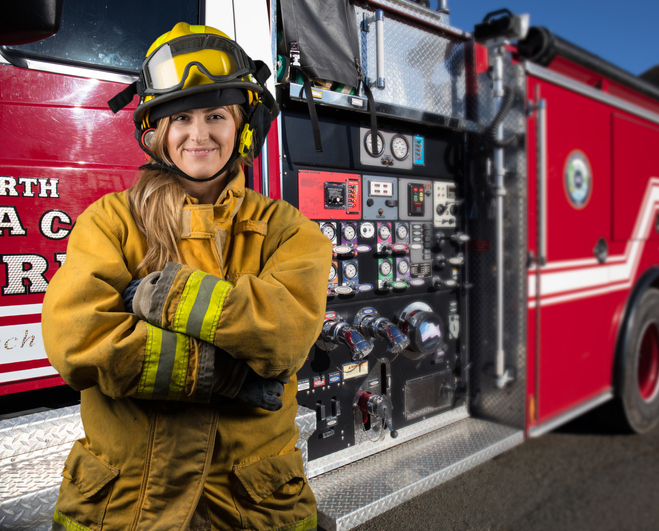Construction lifts are a critical piece of equipment on any job site. There are many types of aerial work machines that lift employees to access high, difficult to reach work areas.
Navigating the various kinds of man lifts can be confusing as they share some similarities, but each serves a distinct purpose.
So, what is a man lift? What are the advantages and disadvantages of each type of lift? And how do you operate one safely?
This article aims to explain the different kinds of man lifts, their distinct features, and provide insight into their uses.
What Is an Aerial Lift?
An aerial lift is a device that lifts you up. It’s also known as a man lift or an aerial work platform (AWP).
An aerial lift’s definition is any powered mobile platform used to elevate personnel to various heights.
The general public definition of aerial lift or man lift includes both scissor lifts and boom lifts, but it’s worth noting OSHA does not include scissor lifts in this category. Rather, they consider scissor lifts as ‘mobile scaffolds.’ This is important for both compliance and training reasons.
Types of Man Lifts
A few different types of lifts fall under the manlift definition. Every aerial lift is a machine that can lift workers, but there are two main categories:
- scissor lifts, which elevate someone directly above the lift’s base crisscrossed metal supports.
- boom lifts, which can lift someone up and over (horizontal from the base) with a movable arm called a boom.
There are different types of lifts that slot into these two main categories.
Scissor Lifts
Electric Scissor Lifts
Scissor lifts that run on electrical power are ideal for indoor use since they are relatively clean and quiet. They tend to be lighter than diesel scissor lifts. Indoor lifts are more likely to have a pneumatic lifting mechanism than a hydraulic one.
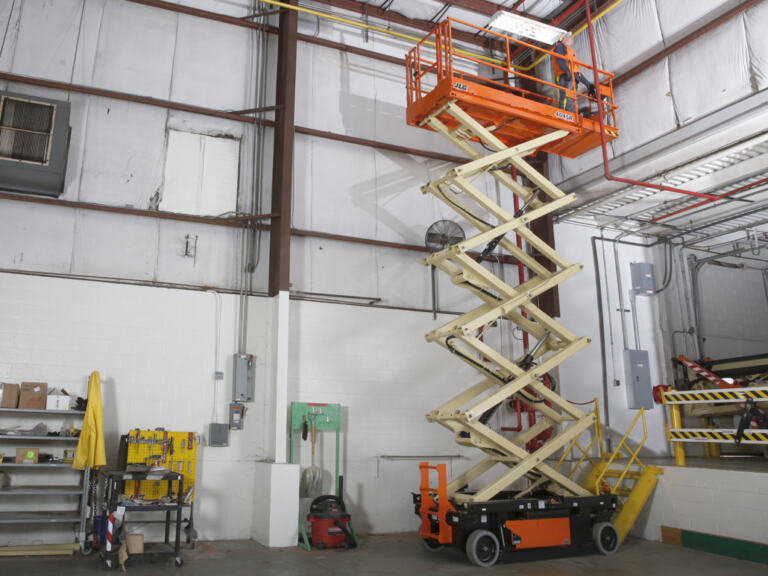
Diesel Scissor Lifts
Diesel-powered lifts are sturdy and designed for outdoor site use. They can generally handle heavier loads and a larger platform than indoor scissor lifts, but they’re also louder and emit fumes.
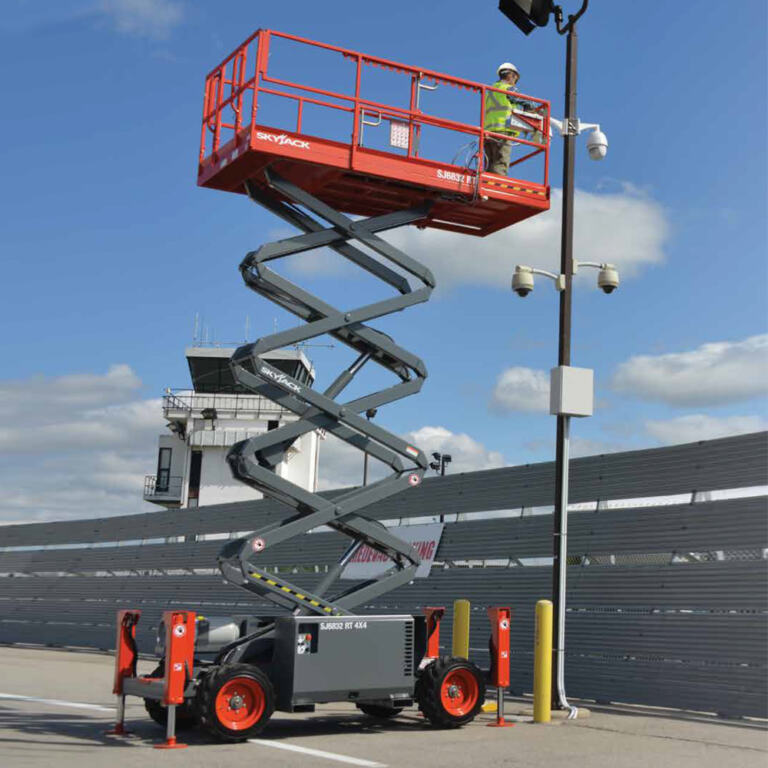
Rough Terrain Scissor Lifts
Some fuel powered scissor lifts come equipped with heavy-duty tires and other safety features for rugged conditions.
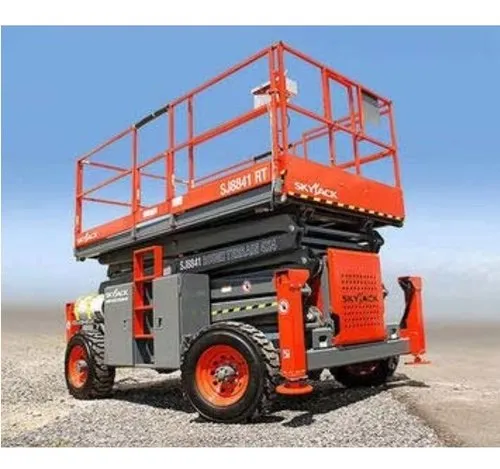
Boom Lifts
Articulating Boom Lifts
Also known as knuckle lifts, articulating boom lifts have multiple joints to help with rotation and extension. Because of these joints articulating booms are good for maneuvering in tight spots around obstacles.
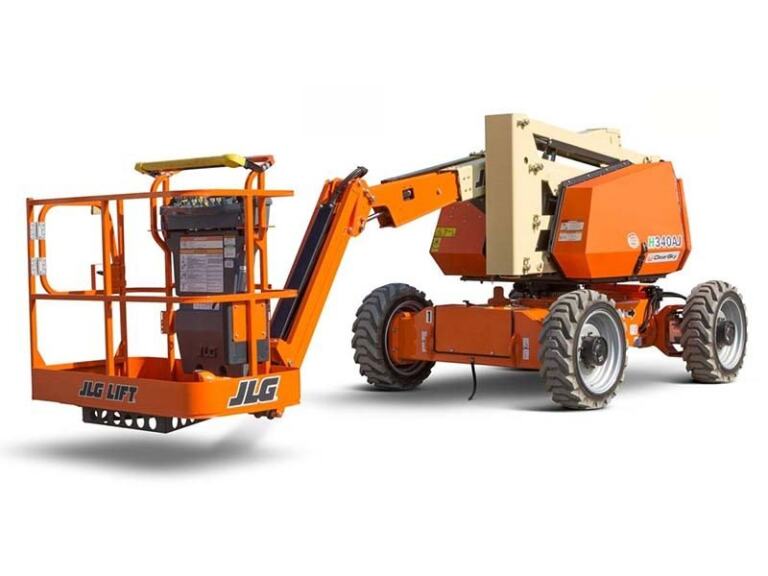
Telescoping Boom Lifts
Unlike knuckle booms, a telescoping boom lift has an arm that telescopes out in a straight line. The arm is typically anchored to a turntable that provides rotation.
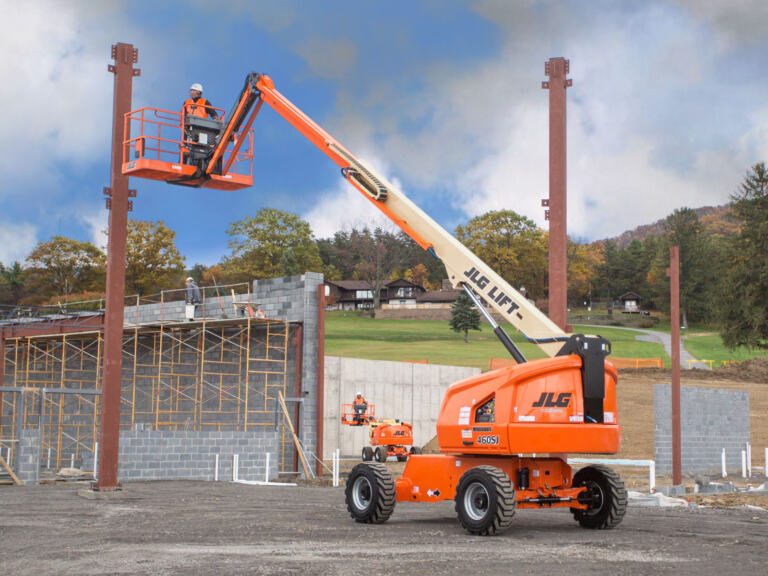
Cherry Pickers
Cherry pickers are a type of articulating boom lift that is mounted in the bed of a truck.
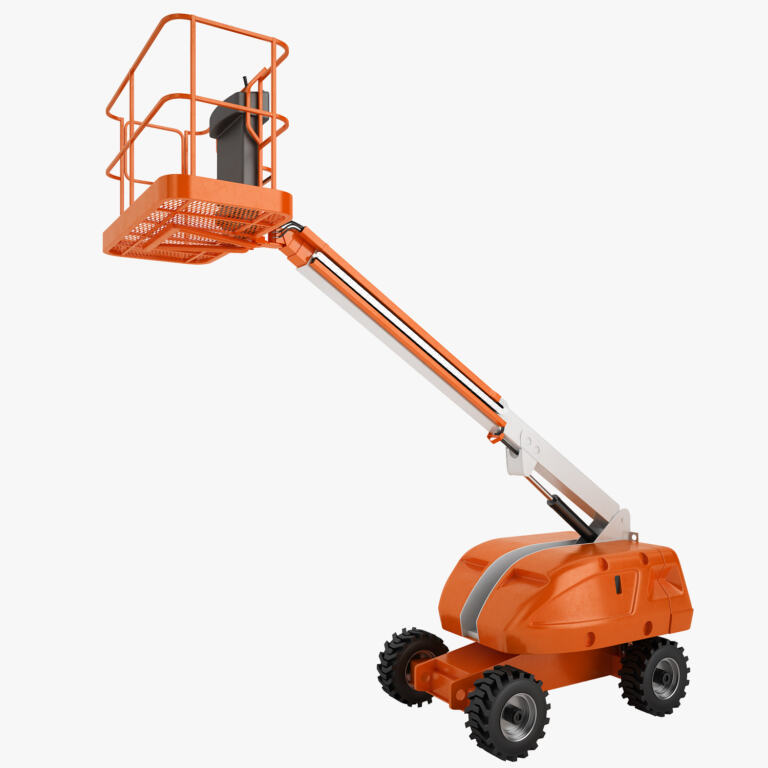
Safety Considerations of an Aerial Work Platform
According to the Center for Construction Research and Training, aerial lifts are responsible for 2-3% of construction deaths every year. Common causes of fatalities include:
- Electrocution after contact with overhead power lines
- Being ejected from the bucket after the lift is struck or suddenly jerks
- The bucket cable or boom broke
- Tip-over
To prevent fatalities and injuries, there are a few precautions you need to take.
Inspect the Equipment
- Before each use, inspect the construction lift equipment thoroughly.
- Look for fluid leaks and loose or missing parts. Check the stability of the guardrails, the break functionality, battery levels, and other key components.
- Do not operate the man lift if you find a problem until it’s fixed.
Safeguard Against Falls
Falls are a major source of injury when operating an aerial work platform, so take special care to prevent them.
- Always latch the door behind you once you’ve entered the lift platform,
- hook yourself into a fall arrest system,
- avoid extending yourself over the guardrails,
- and keep an eye out for nearby obstructions.
Take measures to alert approaching vehicles or personnel that the man lift is in operation – bumps, jerks, and jostles are common causes of ejection.
Avoid Tip-Overs
Another common source of injury in a man lift is equipment tip-over.
- Pay attention to the load capacity limits of the work platform and be careful not to exceed them.
- If you’re working on rough terrain or ground that’s not level, make sure you’re using an aerial lift that’s safe for those working conditions. You should also utilize all available safety features to stabilize the unit.
- If high winds are in the forecast, check the manufacturer specs of your equipment, which should have recommendations on safe wind speeds.
When using boom lifts, it’s possible to cause a tip-over hazard by overloading the basket or overextending the horizontal or vertical reach of the equipment. Check your operator’s manual for this information and be careful to stay within bounds.
What Kind of OSHA Training Do You Need to Operate a Construction Lift?
OSHA has specific training requirements for anyone who will be operating powered platforms, man lifts, and vehicle-mounted work platforms. They apply to both General Industry and Construction settings.
Generally speaking, such training will cover the following:
- Recognition and prevention of safety hazards associated with working platforms
- Emergency action plan procedures for power failure, equipment failure, and more
- Safe work procedures for the operation, use, and inspection of working platforms
- Personal fall arrest systems and their inspection, care, use, and system performance
Since the hazards and safety precautions vary by the type of aerial work platform, you need training that is specific. If you switch from one kind of lift equipment to another, you need to complete the training for the new type of lift before you step foot on the machine.
Online training can help you get OSHA 10 certified for the theory and facts of aerial work platform safety. We have courses specific to scissor lifts, knuckle booms, stiff booms, and other types of heavy equipment.



